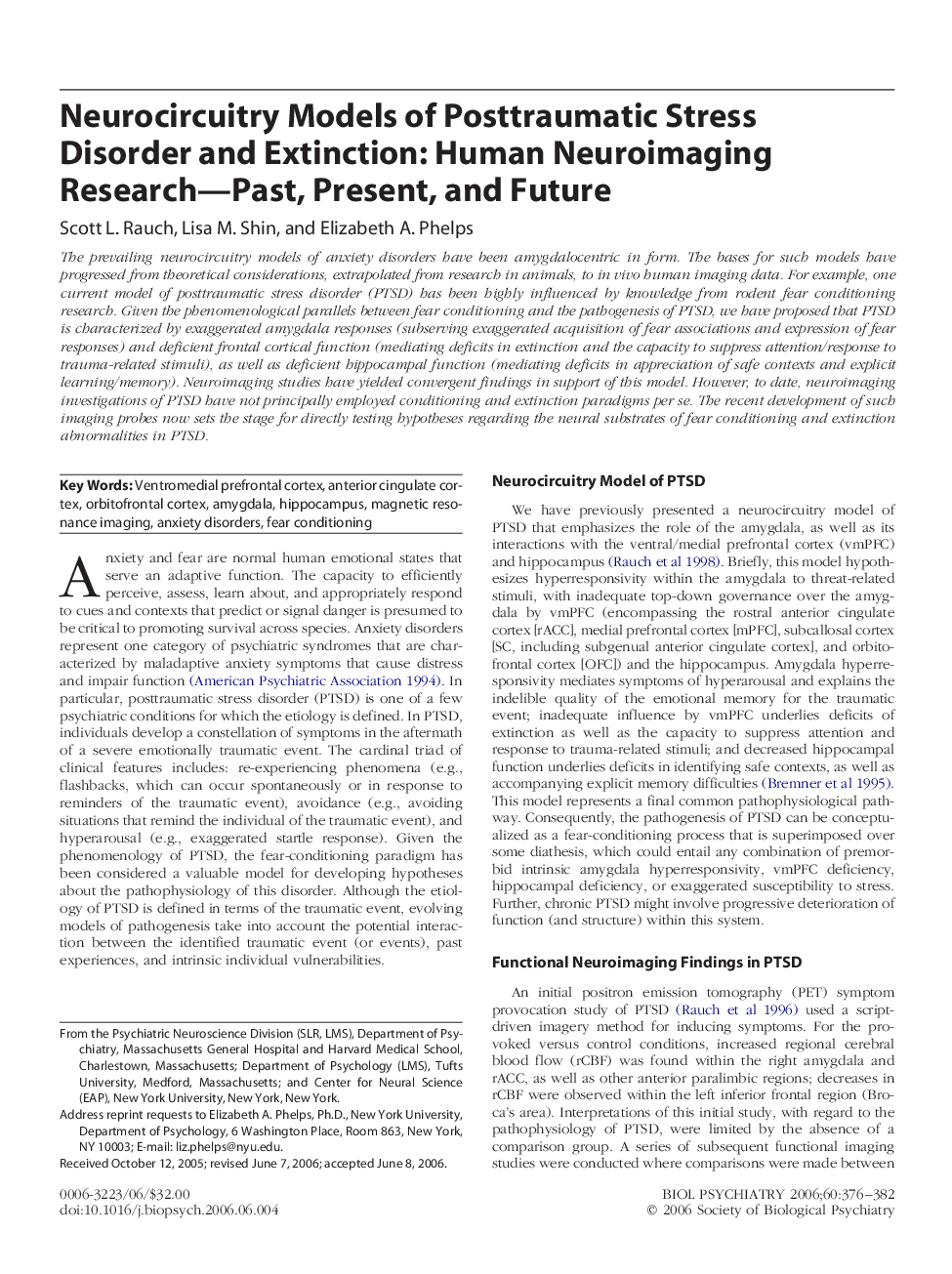| کد مقاله | کد نشریه | سال انتشار | مقاله انگلیسی | نسخه تمام متن |
|---|---|---|---|---|
| 4180628 | 1276612 | 2006 | 7 صفحه PDF | دانلود رایگان |

The prevailing neurocircuitry models of anxiety disorders have been amygdalocentric in form. The bases for such models have progressed from theoretical considerations, extrapolated from research in animals, to in vivo human imaging data. For example, one current model of posttraumatic stress disorder (PTSD) has been highly influenced by knowledge from rodent fear conditioning research. Given the phenomenological parallels between fear conditioning and the pathogenesis of PTSD, we have proposed that PTSD is characterized by exaggerated amygdala responses (subserving exaggerated acquisition of fear associations and expression of fear responses) and deficient frontal cortical function (mediating deficits in extinction and the capacity to suppress attention/response to trauma-related stimuli), as well as deficient hippocampal function (mediating deficits in appreciation of safe contexts and explicit learning/memory). Neuroimaging studies have yielded convergent findings in support of this model. However, to date, neuroimaging investigations of PTSD have not principally employed conditioning and extinction paradigms per se. The recent development of such imaging probes now sets the stage for directly testing hypotheses regarding the neural substrates of fear conditioning and extinction abnormalities in PTSD.
Journal: Biological Psychiatry - Volume 60, Issue 4, 15 August 2006, Pages 376–382